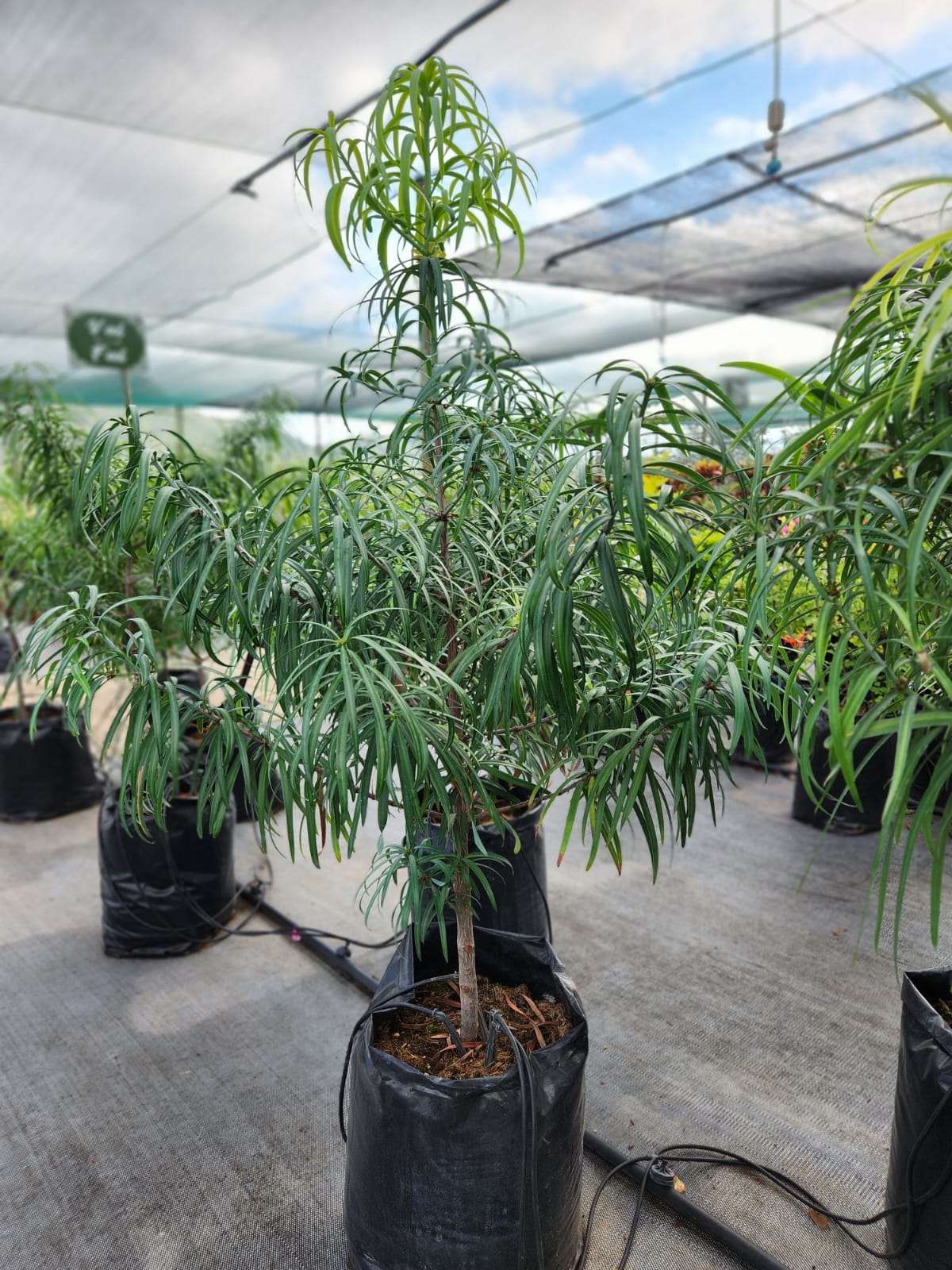Henkel’s Yellowwood (Henkel Se Geelhout) #
Podocarpus henkelii

Quick Info #
- Distribution & habitat: from the former Transkei in the Eastern Cape to KwaZulu-Natal – afromontane forest
- Family: podocarpaceae
- Florescence: Spring
- Fruiting: Autumn/Winter
- Leaf habit: evergreen
- Name origin: “henkelii” refers to Dr JS Henkel, who recognized the tree as a distinct species, while “podos” means “a foot” and “karpos” means “a fruit”, in reference to the fleshy fruit stalks in some species
- Other names: UmSonti (Zulu)
Description #
The Henkel’s yellowwood conifer ranges from medium to large in size and its bark flakes off the trunk in long strips. The tree can grow up to around 30 metres and older trees can have a trunk of over 1 metre in diameter.
The long, slender, glossy leaves in its dense crown have a tapered shape and a dark green colour. They are spirally arranged and pendulous.
The tree has male and female cones. The female cones are particularly prominent with their bright, reddish-purple receptacles. The wood has a yellow colour that deepens with age.
Uses & Ecology #
Birds disperse the seeds. Cape parrots nest in the large, old specimens of the tree. They also eat the seed kernels. Some mammals like monkeys and bushpigs eat the fruits.
The wood is highly valued for furniture due to its beauty and how easy it is to saw.
It’s a nice choice for an indigenous Christmas tree due to its pyramid shape and strong branches.
References #
- CJM Growers (n.d.) Podocarpus henkelii. Available at: https://cjmgrowers.co.za/podocarpus-henkelii/ (Accessed: 13 November 2025)
- Mbambezeli, G. & Reynolds, Y. (2002) Podocarpus henkelii. Available at: https://pza.sanbi.org/podocarpus-henkelii (Accessed on: 13 November 2025)
- Trees South Africa (n.d.) Henkel’s Yellowwood / Henkel-se geelhout. Available at: https://trees-sa.co.za/tree/podocarpus-henkelii/ (Accessed: 13 November 2025)
- Van Wyk, B & P. (1997) Field Guide to Trees of Southern Africa. Cape Town: Struik Publishers.
- Wentzel, J. (n.d.) Podocarpus henkelii. Available at: https://wildflowernursery.co.za/indigenous-plant-database/podocarpus-henkelii/ (Accessed: 13 November 2025)
Caution: Consult a qualified health practitioner before considering medically using or ingesting any plant parts. Any mentioned traditional uses are based on cultural practices and anecdotal evidence. They are not necessarily clinically proven or supported by modern scientific studies.